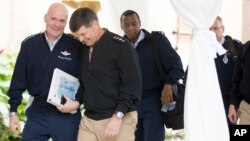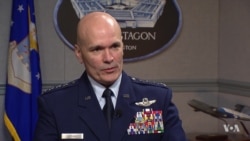It might sound like science fiction, but the general in charge of the U.S. military’s air transports across the globe says refueling and resupplying the military may soon be a job that’s literally out of this world.
“If I can resupply from space I can go across globe in about 30 minutes,” Air Force General Carlton Everhart, the head of Air Mobility Command, told VOA. “I do truly believe that is the next step. We can really make inroads.”
Everhart says the time gained by using hypersonic craft in space could keep him ahead in “the speed of war,” where competitors China and Russia have been trying to make gains.
The idea of using space deliveries isn’t as far out as it may seem. In fact, industry leaders, companies Everhart hopes to partner with, are already working on this type of technology.
Launch vehicles from companies like SpaceX, Sierra Nevada, and even foreign ventures could “provide tremendous strategic advantage to the U.S. government,” according to Eric Stallmer, the president of the Commercial Spaceflight Federation.
But it’s an advantage that would come with an astronomical price tag of thousands of dollars per kilo.
WATCH: Interview with Air Force General Carlton Everhart
Experts say the need to transport via space must outweigh these costs, perhaps only being used during the most important of missions.
Todd Harrison, a space and defense expert at the Center for Strategic and International Studies, points to the 2012 attack in Benghazi, Libya, which killed U.S. Ambassador Christopher Stevens and three other Americans, as a situation where time necessities could overpower cost concerns.
“Imagine if we had been able to launch a SEAL team and put them right down in that compound within 45 minutes of knowing that it was under attack. It could have made the difference,” he said.
The general is not just focused on launching from one point on Earth to another, Everhart also wants to use satellites to preposition cargo in space.
Stallmer said a lot of spaceflight companies are looking at this idea of space refueling depots, including plans to convert those refueling vehicles to habitats within space once they’ve been used.
The future is full of possibilities, but it is unclear when these technologies will be fully developed. Experts give estimates ranging from a couple of years to more than a decade, but that doesn’t stop Everhart from dreaming.
“The train is leaving the station and we’re going to be on it. And I’m not going to be on the caboose. I want to be in front of, I’m going to be in the front,” he said.
The general says his team is already writing government proposals to make space resupply a certainty for future military mobility.













